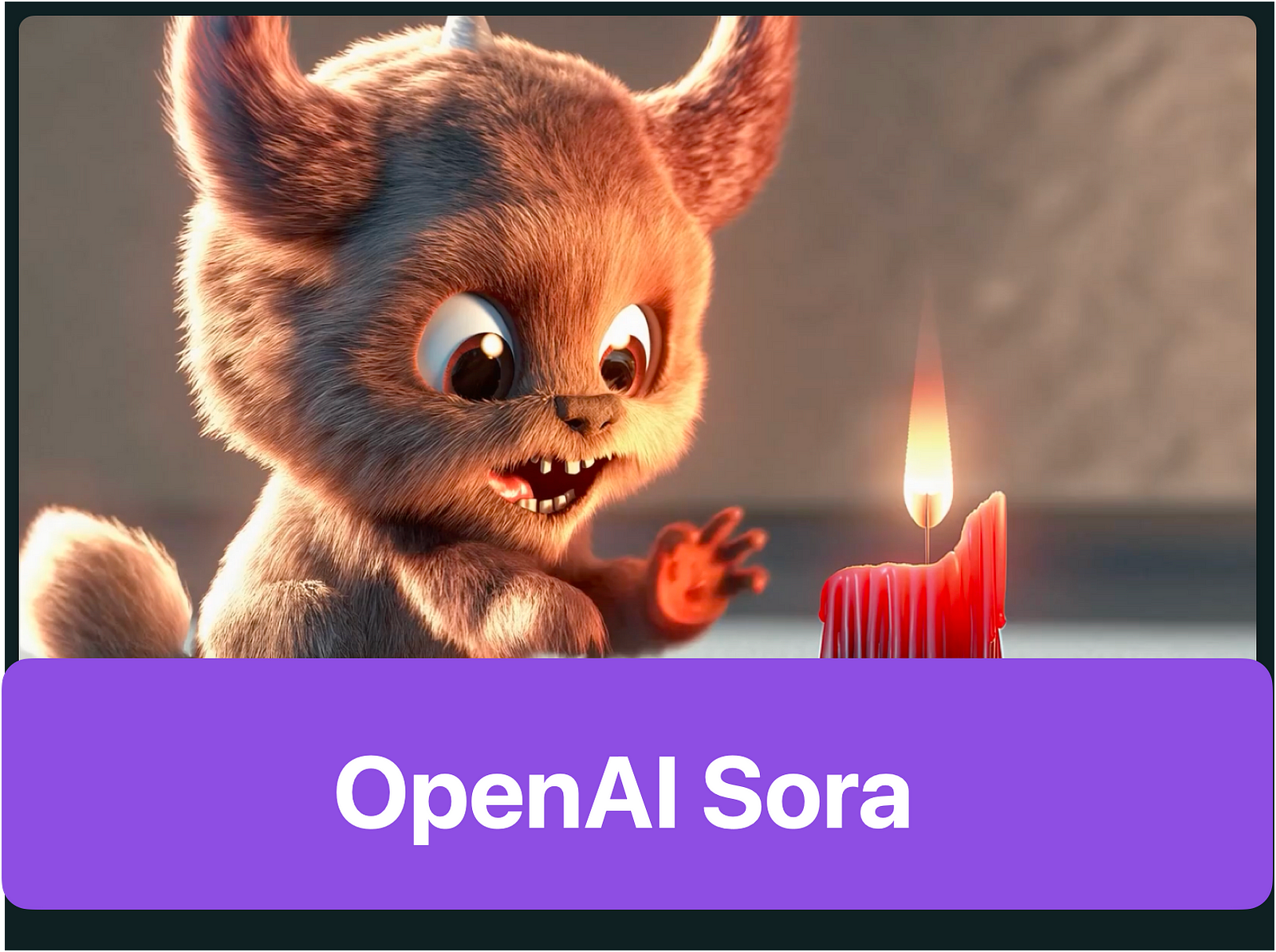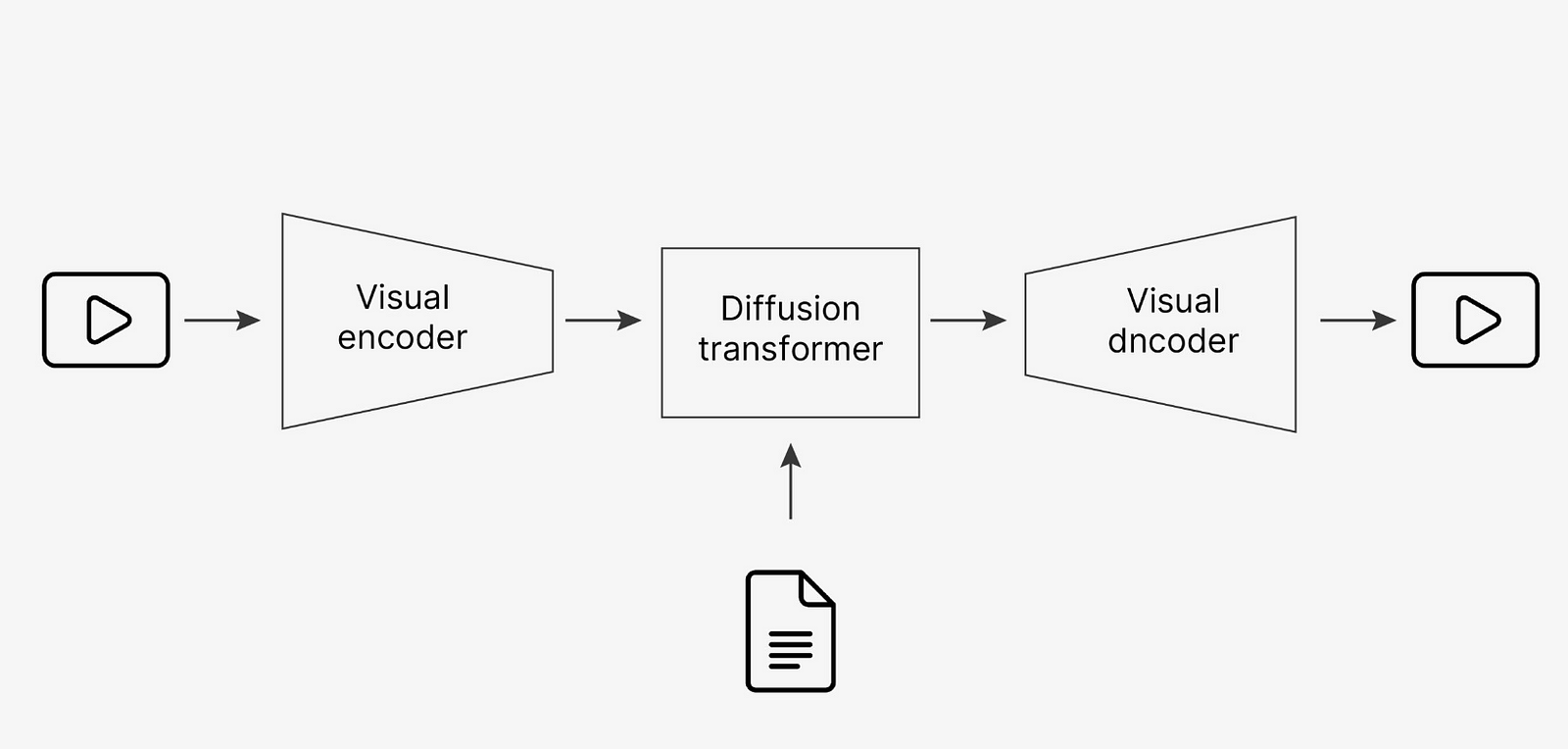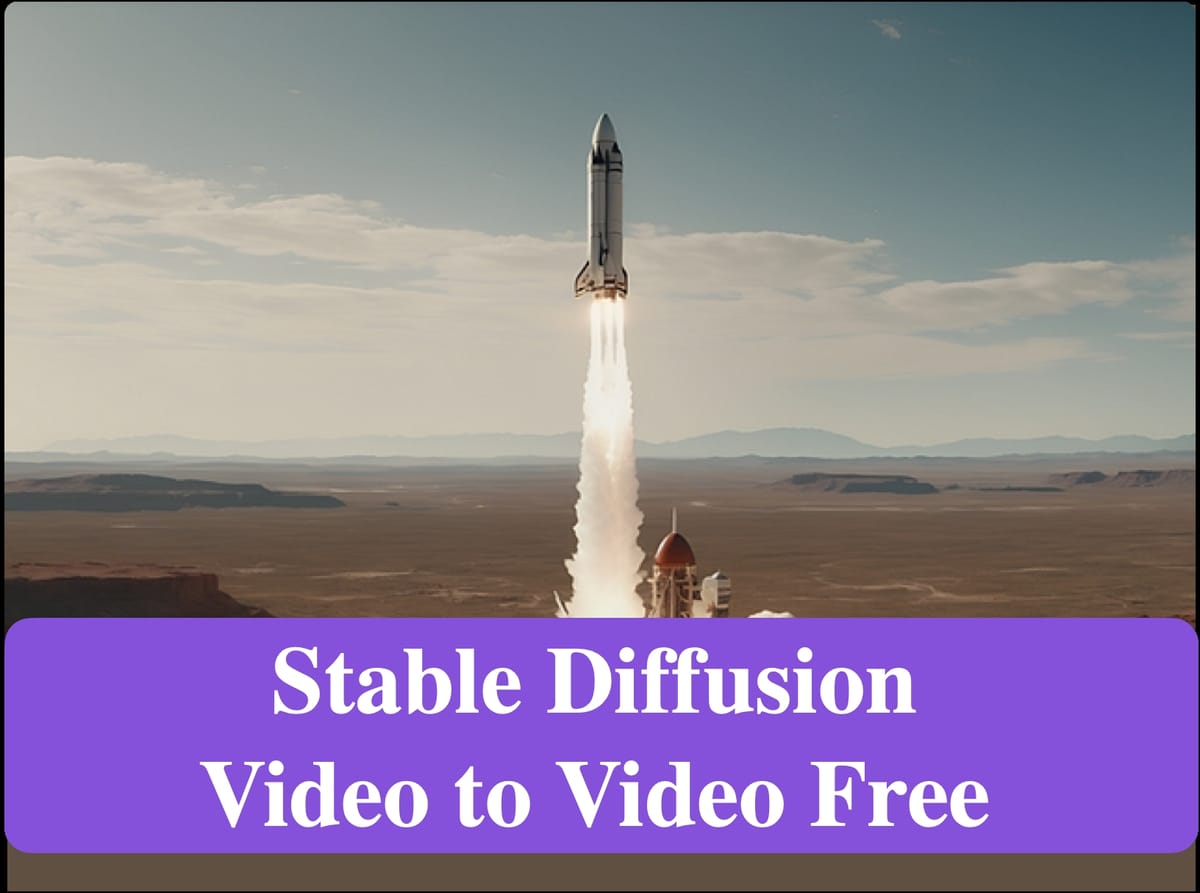Sora: OpenAI’s Revolutionary Video Tool

Experience OpenAI’s revolutionary video tool, Sora. Learn more about its cutting-edge features and capabilities on our blog.
OpenAI, a leading artificial intelligence research laboratory, has once again pushed the boundaries of technology with its latest creation, Sora. Sora is a revolutionary video tool that harnesses the power of generative AI to transform text into visually engaging videos. With its advanced machine learning algorithms and state-of-the-art video generation model, Sora is set to revolutionize the way video content is created.
Understanding Sora: OpenAI’s Revolutionary Video Tool
Sora, OpenAI’s groundbreaking video tool, utilizes the power of generative AI to seamlessly convert text into high-quality videos. Sora is an AI model that uses text instructions to create realistic and imaginative scenes. It incorporates advanced AI models and deep learning techniques to generate video content with exceptional realism and accuracy. By harnessing the capabilities of generative AI, Sora can transform the text prompt into visually stunning videos, allowing creators, artists, and professionals to bring their ideas to life in a whole new way.
Sora’s Role in Transforming Text-to-Video
Sora plays a crucial role in transforming text into video, revolutionizing the way video content is created. By leveraging deep learning, Sora seamlessly converts a text prompt into visually compelling videos. This transformative process not only saves time and effort but also provides a platform for creative professionals to explore new horizons in content creation. With Sora, the possibilities are endless when it comes to bringing text-based ideas to life through the medium of video.
By employing advanced algorithms and training data, Sora generates video content that accurately represents the text input. The model behind Sora is trained on extensive research data, enabling it to understand the nuances of the text and translate them into visual data. The creative potential of Sora is further enhanced by the use of a diffusion transformer, a cutting-edge technology that produces visually stunning videos with vivid colors, accurate details, and a cinematic style.
How Sora Stands Out in the AI Ecosystem
OpenAI is teaching models to understand and simulate real-world motion, aiming to solve problems that require physical interaction.
Here’s what we saw, Sora can generate high-quality videos that are up to one minute in length while ensuring they align with the user’s prompt and maintain visual fidelity.
OpenAI is now providing access to Sora for red teamers, allowing them to assess potential risks and vulnerabilities in critical areas. Additionally, OpenAI is granting access to visual artists, designers, and filmmakers, seeking their feedback to further enhance the model’s usefulness for creative professionals. By sharing their research progress early, OpenAI aims to collaborate with external individuals and gather feedback, while also giving the public a glimpse into the forthcoming AI capabilities.
In the vast landscape of artificial intelligence, Sora stands out as a game-changer in video generation. Its unique features and capabilities make it a valuable tool for creative professionals, artists, and content creators. Unlike static noise models or existing video editing tools, Sora’s video model is designed specifically to generate video content from text prompts, providing a streamlined and efficient workflow.
Sora empowers creative professionals to explore new dimensions of content creation by bridging the gap between text and visual artistry. Its sophisticated technology not only revolutionizes the video editing process but also opens up new avenues for storytelling and creative expression. Whether it’s a movie trailer, a social media campaign, or a visually stunning scene, Sora enables creators to bring their vision to life with unparalleled realism.

Exploring the Workings of Sora OpenAI
To fully understand the workings of Sora OpenAI, let us delve into the technology behind this revolutionary video tool.
At its core, Sora possesses a profound understanding of language, allowing it to accurately comprehend prompts and generate captivating characters that convey vivid emotions. Furthermore, Sora can produce multiple shots within a single video, ensuring a consistent portrayal of characters and visual style throughout.
The process of text-to-video transformation involves training the model on a large dataset of text-to-video pairs. With the help of deep learning techniques, the model learns to understand the underlying semantics of the text prompt and translates it into visual data. By learning the complex relationships between words and visual representations, Sora OpenAI can create videos that faithfully represent the content of the text.
To ensure the highest level of quality, Sora OpenAI utilizes a diffusion transformer, a machine-learning technique that optimizes the generation of video content. This technology allows Sora to generate videos with exceptional visual fidelity, incorporating the physics of a complex scene and natural visual elements. The result is a video production process that combines the power of deep learning and the artistry of visual creation, revolutionizing the field of video editing.

Sora’s technology builds upon the advancements of DALL-E 3. It utilizes a denoising latent diffusion model with a single Transformer acting as the denoiser. This process involves creating a video within the latent space by denoising 3D patches and subsequently converting it to standard space using a video decompressor.
To improve training data, re-captioning is employed, where a video-to-text model generates detailed captions for the videos. These techniques form the foundation of Sora’s AI capabilities, enabling it to generate visually appealing and contextually rich scenes based on textual instructions.
The Technology Behind Sora OpenAI
Sora OpenAI’s technology is based on a sophisticated transformer architecture, a deep learning model that has revolutionized the field of natural language processing. The transformer architecture enables the model to process text data and generate video content of unparalleled quality.
In addition to the transformer architecture, Sora OpenAI also leverages the power of a diffusion transformer, a machine-learning technique that enhances the generation of video content. The diffusion transformer optimizes the generation process, ensuring that Sora OpenAI produces videos with vivid colors, accurate details, and a cinematic style.
To develop the model, Sora OpenAI has been trained on a vast amount of training data, allowing it to learn the complex relationships between text and visual data. This training data encompasses a wide range of video content, enabling the model to understand various styles, aspect ratios, and visual elements. By learning from this diverse training data, Sora OpenAI has become a powerful tool for video generation, capable of producing high-quality videos in a wide range of creative styles.
Sora’s architecture consists of a visual encoder, diffusion Transformer, and visual decoder. The visual encoder compresses videos into a latent space, while the diffusion Transformer generates visual patches based on user prompts. The visual decoder reverses the encoding to produce the final video.

The Process of Transformation from Text to Video
The process of transforming text to video with Sora OpenAI involves several key steps. First, a text prompt is provided as input to the model, which then generates visual data based on the content of the text. The model employs generative AI techniques to create video content that accurately represents the text input.
During the text-to-video transformation, the model takes into account various factors such as scene composition, visual style, and details. It utilizes deep learning algorithms to generate videos that are both visually appealing and faithful to the content of the text prompt. The output videos produced by Sora OpenAI showcase the model’s ability to create realistic visuals, cinematic scenes, and dynamic compositions.
To illustrate the capabilities of Sora OpenAI, let’s consider a few example videos.
Prompt: A stylish woman walks down a Tokyo street filled with warm glowing neon and animated city signage. She wears a black leather jacket, a long red dress, and black boots, and carries a black purse. She wears sunglasses and red lipstick. She walks confidently and casually. The street is damp and reflective, creating a mirror effect of the colorful lights. Many pedestrians walk about.

Another example could be a video showcasing
Prompt: A corgi vlogging itself in tropical Maui.

Through the text-to-video transformation process, Sora OpenAI revolutionizes video production, empowering creative professionals to bring their ideas to life in ways that were previously unimaginable. By leveraging the power of generative AI and deep learning, Sora OpenAI opens new avenues for video creation, pushing the boundaries of visual storytelling and content production.
Use Cases for the Innovative Sora OpenAI
The innovative capabilities of Sora OpenAI have a wide range of use cases that can revolutionize the field of video content creation. Whether it’s for social media, advertising, or prototyping, Sora OpenAI offers unique and powerful tools to enhance the creative process.
Sora OpenAI in Social Media and Advertising
- Sora OpenAI’s video generation technology revolutionizes content creation in social media, providing a versatile tool for generating engaging videos.
- It offers a creative way to showcase products, services, and brand stories, captivating the audience and driving brand engagement.
Prompt: A Samoyed and a Golden Retriever dog are playfully romping through a futuristic neon city at night. The neon lights emitted from the nearby buildings glistens off of their fur.

Prompt: A litter of golden retriever puppies playing in the snow. Their heads pop out of the snow, covered in.

PROMPT: Two golden retrievers podcasting on top of a mountain.

PROMPT: A bicycle race on ocean with different animals as athletes riding the bicycles with drone camera view.

Potential Applications in Prototyping and Concept Visualization
- Sora OpenAI’s video generation technology holds immense potential in prototyping and concept visualization, streamlining the design process in creative industries.
- It allows designers, artists, and creative professionals to quickly visualize their ideas and concepts, enabling them to iterate and refine their designs effectively.
- Sora holds immense potential for a wide range of applications, including transforming news broadcasting and impacting film production. While there are challenges and ethical considerations to address, Sora stands at the forefront of the AI revolution, reshaping the landscape of media production and redefining its future.
The Power of Synthetic Data Generation with Sora
- Synthetic data generation is a powerful technique in data science, and Sora OpenAI leverages this capability to enhance the training of machine learning models.
- By generating synthetic visual data, Sora OpenAI augments the available training data, enabling models to learn from a wider range of examples.
- The use of synthetic data in training models allows for a more comprehensive understanding of visual data, leading to models that are better equipped to handle real-world scenarios.
- Sora OpenAI’s synthetic data generation capabilities open new avenues for data science research, allowing researchers to explore the limits of machine learning and computer vision.
- Leveraging synthetic data generated by Sora OpenAI, data scientists can develop models that exhibit high accuracy and robustness, paving the way for advancements in various fields, including computer vision, robotics, and artificial intelligence.
Highlighting the Limitations and Risks of Sora OpenAI
While Sora OpenAI offers enormous potential, it is important to acknowledge the limitations and risks associated with this technology. Understanding these aspects is crucial to the responsible use and development of tools like Sora OpenAI.
Addressing the Reliability Concerns of Sora
- Ensuring the reliability of Sora OpenAI is of utmost importance to its widespread adoption and use in various domains.
- Sora OpenAI’s video generation process must be thoroughly assessed to ensure accurate and consistent output.
- Constant evaluation and monitoring of the technology’s performance are necessary to address any reliability concerns.
- Rigorous testing, quality assurance, and continuous improvement play a vital role in enhancing the reliability of Sora OpenAI.
- Transparent technology assessment and open collaboration with industry experts can contribute to building trust and confidence in the reliability of Sora OpenAI.
Unpacking the Potential Risks, from Harmful Content to Misinformation
- The current iteration of the model does have certain limitations. It may encounter challenges in accurately simulating the physics of complex scenes and understanding specific cause-and-effect instances.
- For instance, it may struggle to depict a person taking a bite out of a cookie, resulting in the absence of a bite mark on the cookie.
- Additionally, the model may occasionally confuse spatial details, such as left and right, and face difficulties in providing precise descriptions of events that unfold over time, such as following a specific camera trajectory.
- These weaknesses highlight areas where further improvements and refinements can be made to enhance the model’s performance. The potential of Sora OpenAI to generate harmful content or misinformation raises important concerns that need to be addressed.
- Effective content moderation measures and red teaming processes can help mitigate the risks of the technology being misused.
- Strict guidelines and ethical standards must be adopted to prevent the creation and dissemination of harmful or misleading content.

The Ethical Implications of Sora OpenAI
As with any powerful technology, Sora OpenAI raises important ethical implications that require careful consideration and responsible use.
Evaluating the Potential for Biases and Stereotypes
- Ensuring the absence of biases and stereotypes in the output of Sora OpenAI is essential for the development of inclusive technology.
- Evaluating the potential biases and stereotypes present in Sora OpenAI’s content generation requires continuous monitoring and assessment.
- Measures to address biases and stereotypes should be implemented throughout the model training process to promote fairness and diversity.
- Collaborative efforts involving a diverse range of perspectives can help identify and rectify potential biases and stereotypes in the technology.
- Continuous improvement and open dialogue are necessary to foster the creation of technology that reflects the values of inclusivity and promotes diversity.
Ensuring Responsible Use of AI Tools like Sora
- The responsible use of AI tools like Sora OpenAI is crucial to mitigate potential risks and ensure positive outcomes.
- Consideration of ethical guidelines, best practices, and AI governance frameworks is important in the adoption and implementation of Sora OpenAI.
- Encouraging transparency, accountability, and responsible decision-making can contribute to the ethical use of technology like Sora OpenAI.
- Collaboration between developers, researchers, policymakers, and stakeholders is necessary to establish ethical frameworks and define responsible use cases for AI tools.
- Promoting awareness, education, and training about the responsible use of AI tools fosters a positive ecosystem that harnesses the full potential of technology while safeguarding against its potential risks.

A Comparative Analysis: Lumiere Vs Sora AI
In the world of video generation tools, Lumiere and Sora AI stand out as notable competitors. Let us explore the differences and similarities between these two innovative solutions.
Understanding the Differences and Similarities
Video Quality:
Sora AI surpasses Lumiere in video quality, generating videos up to 1920 × 1080 pixels with versatile aspect ratios, while Lumiere is limited to 512 × 512 pixels.
Video Duration:
Sora AI creates videos with extended duration, up to 60 seconds, whereas Lumiere’s videos are limited to around 5 seconds.
Multi-shot Composition:
Sora AI excels in creating videos composed of multiple shots, while Lumiere lacks this capability.
Video Editing Abilities:
Sora AI, like other models, exhibits advanced video-editing capabilities, including creating videos from images or existing videos, combining elements from different sources, and extending video duration.
Realism and Recognition:
While both models produce realistically appearing videos, Lumiere’s AI-generated videos may be more easily recognized, whereas Sora’s videos display dynamic quality with increased interactions between elements.

Accessing and Utilizing Sora OpenAI
Accessing and utilizing Sora OpenAI is a straightforward process that empowers content creators to harness the power of generative AI in video production. There is currently no way to access Sora from a website or API.
PSA: We have not rolled out access to Sora (the new text-to-video model by OpenAI.
Steps to Gain Access to Sora
- The first step to gain access to Sora OpenAI is to create an account on the OpenAI website.
- Once the account creation process is complete, users can sign in to the platform to access the Sora OpenAI tools and features.
- User onboarding guides and tutorials are available to help new users navigate the platform and utilize the capabilities of Sora OpenAI effectively.
- Before accessing Sora, it is essential to ensure that the system requirements, such as computer specifications and internet connectivity, meet the necessary standards.
- OpenAI welcomes user feedback, which is a crucial element in the continuous improvement and development of the Sora OpenAI platform.
How Will Sora OpenAI Shape Our Future?
As Sora OpenAI continues to evolve, its impact on video editing, content creation, and the digital world at large is poised to be significant.
Conclusion
In conclusion, Sora OpenAI is a revolutionary video tool that has the potential to transform various industries and sectors. With its advanced technology and ability to convert text into high-quality videos, Sora stands out in the AI ecosystem. From social media and advertising to prototyping and concept visualization, Sora offers a wide range of use cases. However, it is important to address the limitations and risks associated with Sora, such as reliability concerns and the potential for harmful content or misinformation. Ethical implications must also be considered, including the evaluation of biases and stereotypes. As we continue to utilize AI tools like Sora, it is crucial to ensure responsible use and consider the potential impact on our future.
novita.ai provides Stable Diffusion API and hundreds of fast and cheapest AI image generation APIs for 10,000 models.🎯 Fastest generation in just 2s, Pay-As-You-Go, a minimum of $0.0015 for each standard image, you can add your own models and avoid GPU maintenance. Free to share open-source extensions.
Recommended Reading
